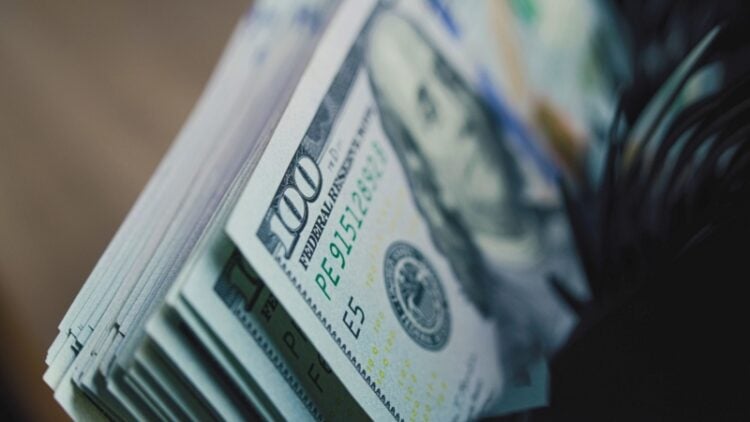Publisher: Maaal International Media Company
License: 465734
Dollar Emerges as Latest Victim of This Week’s Markets Mayhem
The dollar has emerged as the latest victim of this week’s market turmoil as a worsening global trade war risks derailing US economic growth, Bloomberg reported.
A Bloomberg gauge of the greenback tumbled to a fresh six-month low Friday after China raised tariffs on all US goods to 125%, effective April 12. The index kept its losses as US wholesale prices fell in March by the most since 2023, showing tame inflation ahead of higher tariffs. Options traders turned bearish for the first time in five years as part of a broader exodus from US assets.
Listen to the Here’s Why podcast on Apple, Spotify or anywhere you listen
اقرأ المزيد
Haven currencies such as the yen, Swiss franc and gold benefited from the outflows. The euro rose to its strongest level in three years, heading for its biggest two-day advance since 2009.
“The US’s growth advantage to the rest of the world has finally disappeared,” TD Securities strategists Jayati Bharadwaj and Mark McCormick wrote in a note to clients, adding that investors are increasingly moving toward European and Asian assets ex-China. “A combination of all this has turned dollar sentiment deeply negative in a short span of time.”
A group of speculative traders, including hedge fund and asset managers, switched to betting against the dollar and became most short on the dollar since October. They held some $4.3 billion via those bets in the week through April 8, data from the Commodity Futures Trading Commission showed.
Traders are not only losing confidence in the dollar’s long-term prospects — they’re doing so at the fastest pace on record. One-year risk reversals, a key gauge of demand for upside versus downside exposure against major peers, have flipped in favor of dollar downside for the first time in five years.
A Z-score analysis — which measures how far current pricing deviates from historical norms — shows that the speed and magnitude of the shift toward bearish dollar positioning is not only significant, but the most extreme on record. It underscores the scale of the sentiment reversal, suggesting traders are rapidly recalibrating long-held assumptions about the greenback’s role as a haven and store of value.
Friday’s price action rounded off yet another turbulent week for global markets as President Donald Trump’s fast-evolving trade policy leaves investors struggling to figure out their next move. The dollar recorded its biggest plunge in over two years on Thursday amid growing expectations that the Federal Reserve will have to lower borrowing costs to counter the contractionary impact of US tariffs.
The producer price index fell 0.4% from a month earlier following a revised 0.1% gain in February, according to a Bureau of Labor Statistics report released Friday. The median forecast in a Bloomberg survey of economists called for a 0.2% gain. On Thursday, data showed US inflation unexpectedly cooled ahead of tariffs, which are expected to spark price growth.
Other US assets also suffered. The S&P 500 Index finished the day 3.5% lower on Thursday, while long-term Treasuries sank.
Haven Bids
Havens witnessed a surge in demand amid the flight to quality. The yen rallied as much as 1.7% to 142.07 per dollar on Friday, the strongest level since September.
The Swiss franc soared as high as 0.8259 per US dollar, a level last seen in early 2015, while gold rose to a fresh record. The euro climbed to as high as $1.1473, the highest since February 2022. The move reflects emerging haven-like dynamics, bolstered by Germany’s historic suspension of its debt brake last month.
The rapidly deteriorating outlook for the US economy is a sea change from earlier expectations that Trump’s return to the White House would usher in an era of lower taxes, quicker growth and a stronger dollar.
Traders are now watching for Beijing’s response after the White House clarified US tariffs on China rose to 145%. There’s also uncertainty about what will happen after the 90-day pause for higher tariffs on dozens of other nations is over.
“Unless you think some resolution is imminent, then the market is likely stay on the current path of least resistance — a dollar exit,” said Rodrigo Catril, strategist at National Australia Bank Ltd. in Sydney. “The narrative of exiting US assets and selling the dollar is likely to persist as long as trade tensions remain elevated.”
The exodus from US assets is becoming a game-changer for currency volatility. The cost of hedging swings in major exchange rates is climbing, with euro volatility reaching its highest level since 2020 and the Swiss franc hitting highs not seen since 2015.








